Growing Crookneck Squash – The Best Summer Squash
As an Amazon Associate and member of other affiliate programs, I earn from qualifying purchases.
Growing crookneck squash couldn’t be easier, and for your garden, it is hands down the best summer squash you will grow. Yellow crookneck squash is the most productive and flavorful summer squash variety that I’ve ever grown.
What is crookneck squash?
Crookneck squash is a yellow-skinned fruit with a curved neck. Sometimes the flesh is bumpy and sometimes it is smooth. You can also find a very similar fruit without the curved neck which is known as straigtneck.
However, I’ve not tasted another type of summer squash that can compare to the perfect buttery sweetness of the yellow crookneck. You might have gotten a glimpse of the yumminess of the crookneck squash from fruit you bought at the store, but it’s the homegrown product that really stands out in the kitchen.
In this post, I am going to show you how incredibly easy it is to grow this productive vegetable plant at home. We’ll go over starting crookneck squash seeds, planting tips, caring for the plants, and how to preserve crookneck squash.
Crookneck squash plant
Yellow crookneck squash is a variety of summer squash in the Cucurbita pepo family. Crookneck and many of the summer squash varieties are bush plants. They do not grow on long giant vines like many winter squashes and pumpkins do which makes them easier to grow in containers and small spaces.
A squash plant makes large flat leaves on tubular stems which have small prickly spines on them. The fruit sets at the base of the plant and you have to reach around and under the leaves and stems to harvest the fruit.
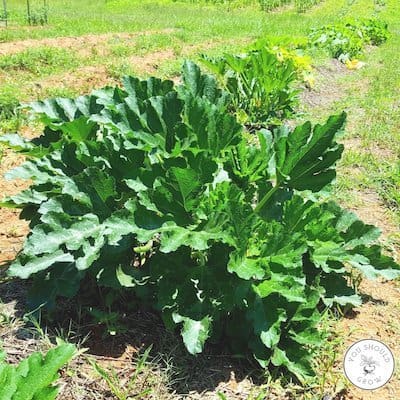
The little spines on the leaves and stems will scrape against your hands and arms which is admittedly a little uncomfortable and itchy when you’re harvesting from several plants. For that reason, you may choose to wear gloves and long sleeves for harvesting.
As long as you’re removing fruit from your squash plant, crookneck squash plants will continue to produce until killed by frost or disease. And healthy plants are prolific enough to only need 1 or 2 plants to feed your family for the summer.
Other varieties to try
If you’re looking to try something other than (or in addition to) crookneck squash, I recommend you try one of these cool varieties:
- Zephyr – this hybrid variety has a milder flavor than crooknecks, but it’s the coloring that makes this squash stand out. It’s very unique having green colored flesh at the blossom end. It’s one of my favorite vegetables to take to market.
- Golden Egg – another hybrid variety that I like because of its different shape. These grow into large egg shaped squash, and they hold up very well on the grill.
- Pattypan – this is another squash known for its unique shape, but patty pans (also known as scallop squash) are heirloom varieties. I like to harvest and cook these squashes when they’re very small and still have the blossom attached.
- Lebanese white – this heirloom squash is among the smaller of the squash plants making it great for container gardens.
Growing crookneck squash
Summer squashes are generally very easy to grow and are a great choice for the beginner gardener. They’re one of the easiest vegetables to start from seed, and they do best when seeded directly into your garden soil.
Squash likes soft fertile soil, but it will grow in most soil types. We have no trouble growing crookneck squash in our Georgia red clay, but dry, overworked soil will lead to poor production and disease problems.
For the best results, prepare your garden for squash plants by mixing in 2-4 inches of compost or other appropriate garden soil amendments as needed.
What you need to know about squash flowers
Squash plants make male and female flowers. The male flower produces pollen and the female flower produces fruit. Early on in the season, you might notice that your plants are only producing male flowers.
This is totally normal, and it’s speculated that the plants do this to attract pollinators to the plants before they start putting energy into making fruit. Because squash plants are not self-pollinating, bees, wasps, and other pollinators are necessary for the production of fruit.
If you are concerned that pollinators are not visiting your squash plant flowers, you can do the pollinating yourself.
How to pollinate a squash flower
First, you’ll identify a male flower. Male flowers stand tall and proud. They have a straight stem with no ovary and a single upright stamen in the center.
Now find a female flower. Female flowers are usually tucked at the base of the plant on a short stem. You will also note an ovary at its base that looks like a tiny version of the mature fruit.
To prepare the male flower for pollinating a female flower, remove the male flower from the plant and pull off its petals.
In the center of the female flower, the yellow cluster of the stigma is the receptacle for the pollen. Gently touch the stamen to stigma to transfer the pollen from the male flower to the female. That’s all you need to do.
You can see that pollinating squash flowers is not difficult, but it’s much more convenient and productive if you encourage pollinators to visit your squash plants.
Planting crookneck squash seeds
Squash seeds are relatively large seeds so it’s easy to place them individually in your garden. We often let the kids plant these seeds because they love being a part of growing our food.
If you have a very short growing season (less than 90 days), then I would recommend starting your squash seeds indoors about 3 weeks before your planting date. However, most gardeners can direct seed this crop into their garden in early spring.
Set out crookneck squash seeds (or plants) about 2 weeks after your last frost or when the soil outside is 65F or higher. To plant squash seeds, simply press the seed into the soil about an inch deep, cover lightly with soil or compost, and water them well.
The spacing between crookneck squash seeds should be 2-3 feet. Most summer squash plants don’t vine out, but they will grow to several feet wide, and crowding squash plants is a good way to get overrun by squash bugs and powdery mildew.
Squash seeds usually germinate within 3-10 days and make their first fruit within 60 days of planting. And they’ll keep making fruit until they’re killed by frost or disease.
Did you know? While considered a vegetable in the kitchen, crookneck squash is actually a fruit by the botanical definition.
Caring for summer squash plants
Summer squashes are fairly low maintenance plants. When planted in the right location and kept hydrated, they really don’t need a lot of care.
Plant summer squash where they’ll get a minimum of 6-8 hours of sun per day. They love bright light and heat, but you do have to keep them well watered.
Crookneck squash is a very watery vegetable, and plants that don’t get enough water will make fewer fruits and have trouble with blossom end rot. If you encounter squash bugs or powdery mildew, employ organic methods to control squash problems.
In healthy soil, you won’t need to worry about fertilizing your squash plants. But if you notice that the plant is not growing or not making flowers or fruit, then you should side dress with a fertilizer that has an NPK ratio where the middle number (phosphorous) is larger than the first number (nitrogen).
Best plant companions for crookneck squash
Because squashes require pollinators to set fruit, companion planting with flowers is an excellent idea.
Zinnias, asters, and sunflowers are lovely among your vegetables and attract numerous beneficial insects. Nasturtium is especially beneficial when grown with crookneck squash as it helps repel squash bugs, and its pretty flowers have a bright peppery taste.
Other plants that make great companions for summer squash include borage, marigold, oregano, and lemon balm. They also grow well with radish, corn, cucumber, and melons.
Growing crookneck squash in containers
Crookneck squash is a great plant for growing in containers. You might get away with a container as small as 5 gallons, but I would get a 10 or 20 gallon container for a single squash plant.
Care of container grown plants is similar to plants growing in the ground except that containers tend to dry out more quickly, so keep a close eye on your container grown squash for drying out.
There is no need to add a trellis or support for summer squashes as most are bushy plants that are not suited to vertical gardening.
Harvesting crookneck squash
Crookneck squash, like other summer squashes, is best when harvested young. The young fruit of summer squash is sweeter and more tender. This is in contrast to winter squash which becomes sweeter as it ages.
I like to pick crookneck squash at about 4 inches, but you can pick it younger or older than that according to your taste. As crookneck squash gets larger, it also gets an unpleasant pithy texture and loses is sweet buttery flavor.
Earlier in the season, the fruit stays tender and sweet for longer. But as it gets hotter and drier in late summer, you’ll want to pick fruits at 4 inches or less.
Aside from their size, you can tell summer squash fruits have gone too far when the flesh gets too hard to dent with your fingernail and the color changes from bright yellow to orange.
You can also harvest and cook up the flowers and leaves of your squash plants. Make sure not to take too many flowers or leaves so that your plant can continue to produce fruit.
Crookneck squash plants will continue to flower and fruit as long as you keep picking them. If you leave very many fruits on the plant, it will think its job is done and quit producing.
Toward the end of the season, let one healthy fruit mature completely to save seed. Immature fruits also have immature seeds. To save seed from crookneck squash, simply remove seeds and set them on a paper towel to dry for about a week.
Cooking with crookneck squash
Crookneck squash is easy to use in any recipe that calls for summer squash or zucchini. Its rich sweet flavor is delicious sauteed with onions, battered and fried, and layered into casseroles. You can even substitute yellow crookneck squash for zucchini when baking.
Use the spiralizer to make curly veggie noodles or the mandoline to create long slices perfect for making a veggie lasagna. But, personally, I love simple recipes that highlight the delicious flavor of this summer veggie.
We like to make a simple side dish of sliced squash, onions, and tomatoes drizzled with a little olive oil and flavored with salt, pepper, and a little parmesan. We just layer the veggies in a baking dish and let it cook at 350 for 30 minutes.
Sprinkle with your favorite fresh herbs from the garden before serving. It’s simple, fresh, and can be completely homegrown!
Preserving crookneck squash
After you pick your crookneck squash, you’ll need to use it within a week. It will last a few days on the counter and about a week if kept in the fridge.
If you know you’re not going to be able to use it, there are a few ways you can preserve it. Summer squash, in particular, is not amenable to all the methods of preserving food. None are going to be quite as good as the fresh veggie, but they’re still nutritious and filling.
Because of the high water content of this vegetable, there is no good way to preserve the texture for eating later. That said, here are the very best ways to preserve your squash harvest for homegrown cooking beyond summer.
Canning summer squash
Summer squashes including crookneck squash are a low acid vegetable. So water bath canning methods are not going to get hot enough to keep your food safe, and the USDA has withdrawn its recommendations for pressure canning.
I know that many families have been canning summer squash in a pressure canner for generations, but to be on the safe side, it’s best to preserve crookneck squash by dehydrating, freezing, or pickling.
Here’s some more info on preserving summer squash from the Clemson University extension service.
Dehydrating summer squash
You can also dehydrate summer squash to make your own veggie chips. Try this salt and vinegar recipe or these super easy dehydrated squash shreds.
Freezing summer squash
You can freeze summer squash blanched or unblanched, but blanching helps it retain its flavor longer. Squash can also be breaded for frying prior to freezing.
Another option is to make freezer friendly squash dishes that can be stored in the freezer until you need them.
Will you be growing crookneck squash this year?
Share your experience in the comments below!


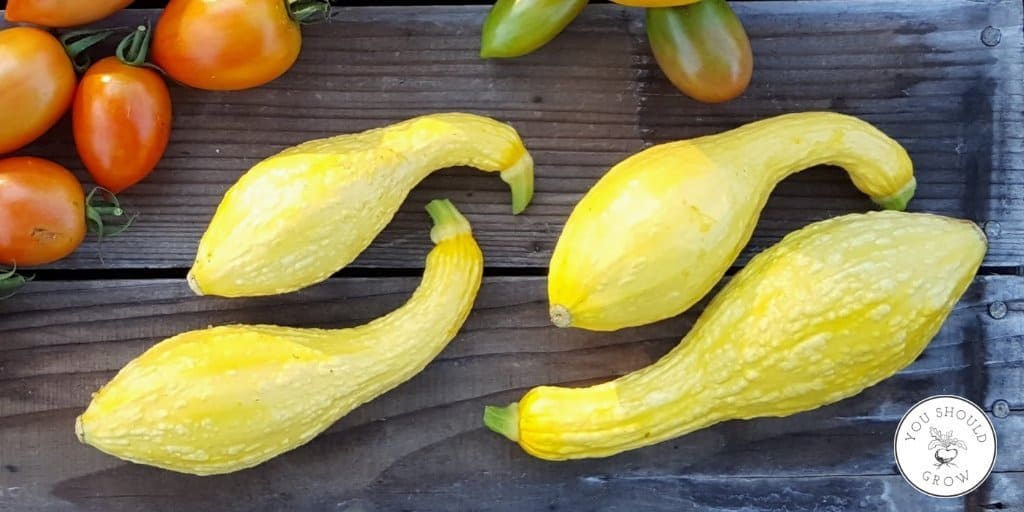
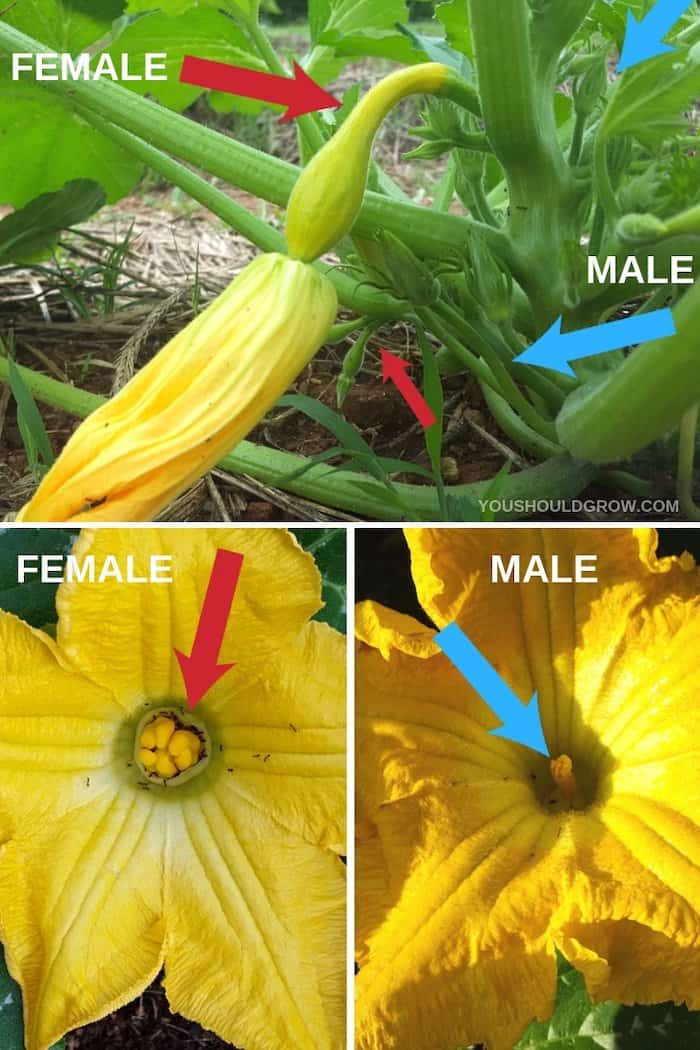
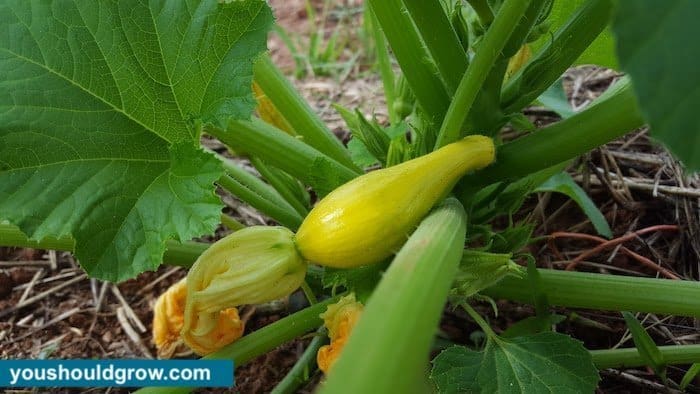
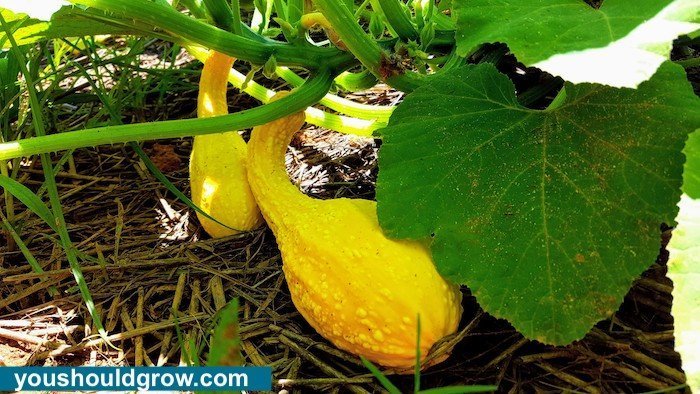
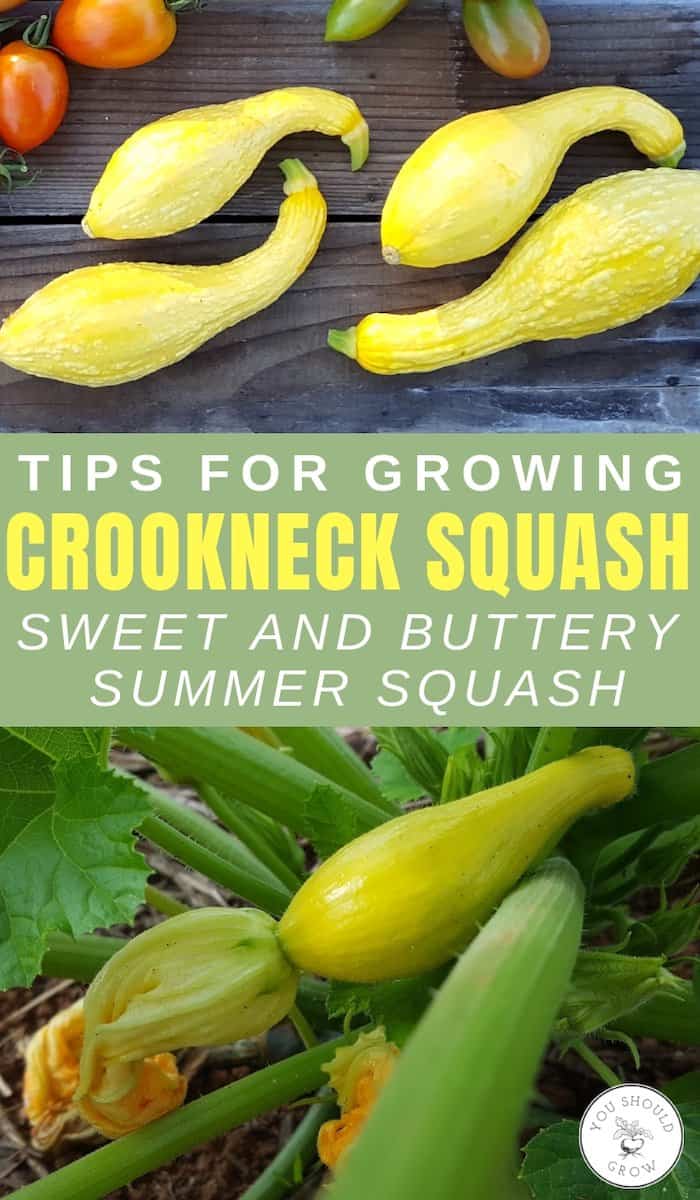
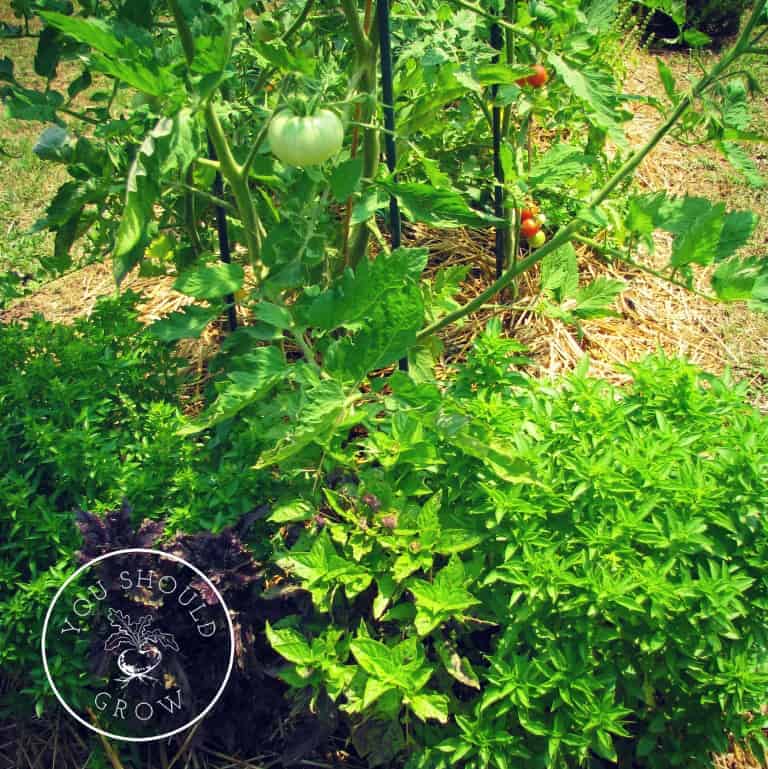
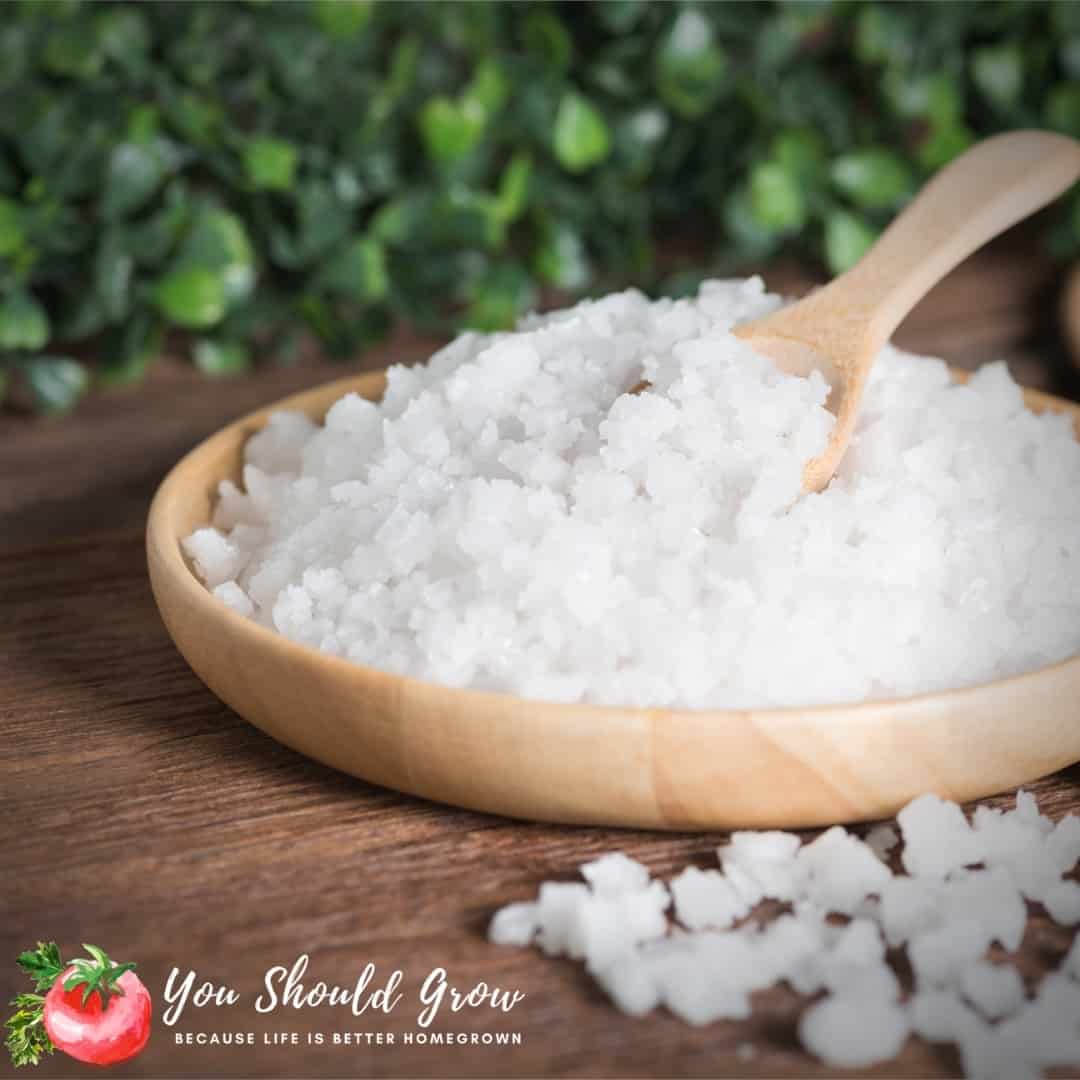

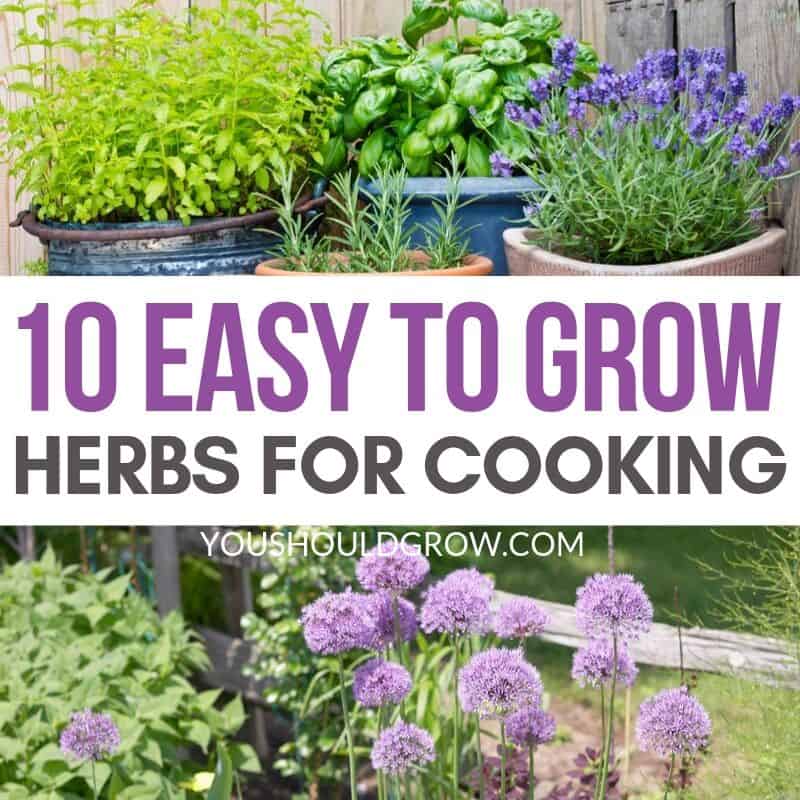
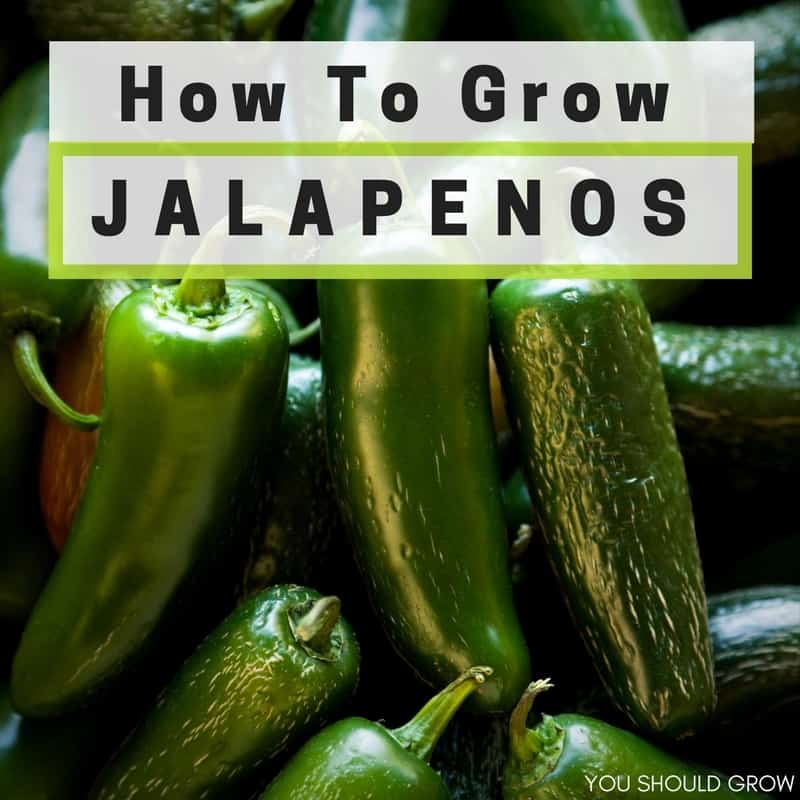

My husband grew squash this year but forgot what kind of seeds he had purchased. When they started growing he thought they were butternut, but lo and behold, they are crookneck! We fried some (sliced) on the griddle with a little oil and some seasoning and also fried some slices coated with breadcrumbs and Parmesan. Both were good, but I like them raw best! They are flavorful and crunchy, and when cut into bite-size pieces are wonderful added to a salad. I also substituted them for zucchini in zucchini bread and am about to have a piece of that right now!
That sounds awesome, Denise!
This is an excellent article: simple and concise, without the usual jabbering seen on most sites. THANK YOU!,
I am growing crookneck squash again this year from seeds and for some reason I am getting only female blossoms with lots of 2-inch little squashies. There is not a single male flower on either plant! What is going on here? I cannot find this problem anywhere on the internet so any suggestion n how to handle would be greatly appreciated.
I have seen them throw only male or female flowers early on, but it usually works itself out. If not, then there’s a hormonal issue, and you have to look to eliminate stress. I’d start with watering, nutrient, and soil pH issues. The good news is you can eat squash blossoms with the babies, so it doesn’t have to be a total waste!
is it k to pick them when they have so
me green on them?
Very informative !! Thank you for explaining how to pollinate the plants myself. We seem to have fewer bees and butterflies the last few years so this might help me to actually have squash to pick this year.